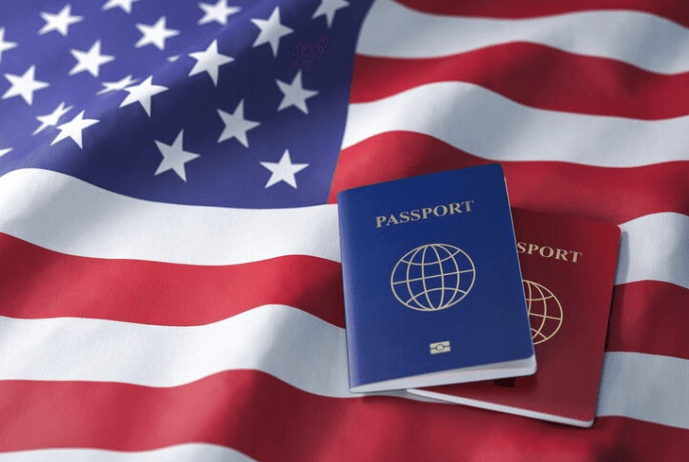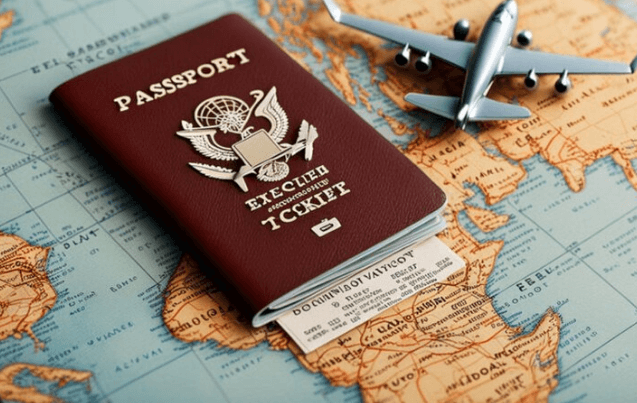Let’s talk about something really interesting – Canada’s immigration scene. You know, Canada has always been this welcoming land, famous for its diversity and inclusivity.
It’s like a mosaic of cultures, right? Well, there’s been some buzz about changes in their immigration policies for 2023 and 2024. Let’s dive into what’s new and what it means for folks looking to call Canada their new home.
Canada’s Embrace of Immigration
First off, Canada really values immigration. It’s not just about numbers; it’s about enriching the country’s cultural fabric and driving economic growth. Immigrants bring fresh perspectives, skills, and a whole lot of vibrancy to the Canadian way of life. It’s like adding new colors to an already beautiful painting.
What’s New in 2023 and 2024?
Now, onto the juicy part – the changes in 2023 and 2024. Canada’s not just sticking to the old script; they’re evolving. The government’s rolled out new plans that are pretty ambitious and show a strong commitment to keeping Canada at the forefront of global immigration.
Canada’s Immigration Targets for 2023-2024
Aiming Higher
So, here’s the deal with the numbers. In the Immigration Levels Plan for 2023-2025 and 2024-2026, Canada’s setting the bar high. They’re planning to welcome a whopping number of new permanent residents. We’re talking about targets ranging from 410,000 to 505,000 in 2023, and then jumping to 430,000 to 542,500 in 2024. That’s a significant increase, isn’t it?
Breaking Down the Numbers
Let’s put these numbers into perspective. Compared to the past few years, these targets are a big leap. It’s like Canada’s saying, “We’re open for more!” This increase shows a clear intent to boost the country’s population, fill labor gaps, and keep the economy buzzing. It’s a bold move, but hey, that’s Canada for you – always thinking ahead.
What does all this mean for someone eyeing Canada as their new home? Well, it’s good news! More slots mean more opportunities to be part of the Canadian dream. It’s like Canada’s rolling out the red carpet for immigrants, and that’s pretty awesome. The Great White North is gearing up for a vibrant, diverse future, and it’s exciting to see how these changes will unfold. Keep an eye on this space – Canada’s immigration story is getting more interesting by the day!
Key Changes in Immigration Policies
Canada’s immigration landscape is always evolving, and the latest changes for 2023 and 2024 are no exception. Let’s break down what’s new and how these changes might impact those looking to immigrate.
New Policies and Modifications
One of the most notable shifts is the increased immigration targets. Canada is aiming to welcome a significantly higher number of immigrants. This move is a clear indication of Canada’s commitment to fueling its economic growth and cultural diversity through immigration.
But it’s not just about increasing numbers. There have been tweaks in policy too, aimed at streamlining the process and making it more efficient. For instance, there’s a greater emphasis on digital applications to speed up processing times. Also, there’s a noticeable shift towards attracting skilled workers to address labor shortages in specific sectors.
Impact on Potential Immigrants
For potential immigrants, these changes are mostly positive. Higher targets mean more opportunities to get in. The focus on skilled workers and efficiency could translate to faster processing times for qualified applicants. However, it also means the competition might get tougher, especially for highly sought-after skills and professions.
Categories of Immigration
Canada’s immigration system is diverse, covering several categories. Let’s look at how the new targets and policies affect each.
Economic Immigration
This category is the star of the show in Canada’s immigration policy. It includes programs like the Express Entry system, the Provincial Nominee Program (PNP), and various business immigration options. The goal here is to attract individuals who can contribute to Canada’s economy, primarily through their skills and work experience.
With the new policies, there’s an even greater focus on economic immigration. The increased targets are likely to benefit skilled workers, entrepreneurs, and those who can contribute to Canada’s economic prosperity.
Family Reunification
Family reunification remains a cornerstone of Canada’s immigration policy. This category allows Canadian citizens and permanent residents to sponsor family members, including spouses, partners, children, and sometimes parents and grandparents, to join them in Canada.
The new policies don’t significantly alter this category, but the increased overall targets might lead to more slots available for family sponsorship, reducing waiting times for families.
Refugee and Humanitarian Programs
Canada continues to be committed to its humanitarian obligations, offering protection to refugees and asylum seekers. The new policies maintain this commitment, ensuring that Canada remains a safe haven for those in need.
Economic Immigration: A Focus on Skilled Workers
Express Entry System
The Express Entry system is a key player in Canada’s economic immigration strategy. It’s a points-based system that ranks candidates based on factors like age, education, work experience, and language proficiency.
Recent changes in this system reflect a greater emphasis on work experience and specific skill sets that are in demand in Canada. This means that applicants with strong professional backgrounds in sectors like technology, healthcare, and engineering might have a better chance of being invited to apply for permanent residency.
Provincial Nominee Program (PNP)
The PNP allows Canadian provinces and territories to nominate individuals who wish to immigrate to Canada and who are interested in settling in a particular province. Each province has its own criteria, often targeting specific skills that are in demand locally.
With the new policies, we might see provinces adjusting their criteria to align more closely with local labor market needs. This could mean more opportunities for immigrants with skills that are specifically needed in certain provinces.
Changes in Points System and Eligibility
While the core of the points system in Express Entry remains largely unchanged, there’s always the possibility of tweaks to reflect the evolving labor market needs. For instance, additional points for certain job offers or Canadian work experience could be introduced, or the criteria for language proficiency might be adjusted.
Family Reunification: Policies and Priorities
Family reunification remains a pivotal aspect of Canada’s immigration policy, reflecting the country’s commitment to keeping families together. This segment of immigration allows Canadian citizens and permanent residents to sponsor their family members, including spouses, partners, dependent children, and sometimes parents and grandparents, to live in Canada as permanent residents.
Family Sponsorship Programs
The family sponsorship programs are designed to promote the unity of families in Canada. The most common categories include:
- Spousal and Common-law Partner Sponsorship: This program enables Canadian citizens or permanent residents to sponsor a spouse or common-law partner for Canadian residency.
- Dependent Child Sponsorship: This allows for the sponsorship of dependent children, including adopted children.
- Parent and Grandparent Sponsorship: This program is for sponsoring parents or grandparents, although it’s subject to specific caps and often involves a lottery system due to high demand.
Changes in Sponsorship Requirements and Processing Times
In recent years, there have been efforts to streamline these programs to reduce processing times, which had been a significant concern. While the specific changes in requirements or processing times for 2023 and 2024 are not drastically different from previous years, the Canadian government continues to work on improving the efficiency of these processes. The increased overall immigration targets may also positively impact the family reunification stream, potentially leading to quicker processing times.
Refugee and Humanitarian Programs
Canada has a long-standing reputation as a safe haven for refugees and those in need of protection. The country’s policies in this regard are guided by compassion and a commitment to international obligations.
Canada’s Stance and Policies for Refugees
For 2023 and 2024, Canada continues to uphold its humanitarian approach to refugees. The country offers protection to those fleeing conflict, persecution, or serious human rights violations through several programs, including the Government-Assisted Refugees Program and the Private Sponsorship of Refugees Program.
New Initiatives or Changes in Existing Programs
While the core principles of Canada’s refugee and humanitarian programs remain consistent, there are always adjustments to respond to global situations. For instance, Canada may introduce special measures or programs to respond to specific crises or increase its intake from regions experiencing heightened conflict. These initiatives are typically designed to provide faster and more effective support to those in dire need of protection.
Step-by-Step Guide to Applying for Immigration to Canada
Applying for immigration to Canada can be a complex process, but with the right guidance, it’s manageable. Here’s a detailed step-by-step guide to help you through the journey.
Step 1: Determine Your Eligibility
- Research Immigration Programs: Canada offers various immigration programs, including Express Entry, Provincial Nominee Programs, Family Sponsorship, and more. Each has its own criteria.
- Take Eligibility Tests: Use online tools on the Government of Canada’s website to determine which programs you’re eligible for.
Step 2: Gather Necessary Documentation
- Personal Documents: Prepare your passport, birth certificate, and other personal identification documents.
- Language Proficiency Test Results: Most programs require language proficiency in English or French, evidenced by tests like IELTS or TEF.
- Educational Credentials Assessment (ECA): If you studied outside Canada, you might need an ECA.
- Work Experience Documents: Gather employment references, pay stubs, and other proof of work experience.
- Police Certificates: You may need to provide police clearance certificates from countries you’ve lived in.
Step 3: Create Your Online Profile
- For programs like Express Entry, create a profile online. Fill in details about your skills, work experience, language ability, education, and more.
Step 4: Submit Your Application
- Application Submission: Once you receive an invitation to apply (ITA), submit your detailed application with all required documents.
- Application Fees: Pay the necessary fees for processing, which vary by program.
Step 5: Wait for Processing and Decision
- Processing Times: These vary by program. Check current processing times on the official website.
- Updates: Keep an eye on your email and application account for any updates or requests for additional information.
Step 6: Prepare for Arrival (if approved)
- Confirmation of Permanent Residence (COPR): You’ll receive this document once your application is approved.
- Plan Your Travel: Organize your travel to Canada before your COPR expires.
Useful Resources and Links
- Immigration, Refugees and Citizenship Canada (IRCC) Website: www.canada.ca/en/immigration-refugees-citizenship.html – Your primary source for applications, forms, and detailed program information.
- Express Entry Profile Setup: Express Entry – For skilled workers applying through the Express Entry system.
- Provincial Nominee Programs: Each province has its own website with specific application details.
- Language Test Information: IELTS for English and TEF Canada for French.
Challenges and Considerations
Navigating the Complexity
- Complexity of Process: The immigration process involves understanding various programs, each with its own set of rules and requirements.
- Tip: Research thoroughly and consider consulting with an immigration lawyer or a certified immigration consultant for guidance.
Keeping Up with Changing Policies
- Policy Changes: Immigration policies can change, affecting processing times and eligibility.
- Tip: Regularly check the IRCC website for the latest updates and policy changes.
Preparing Sufficient Documentation
- Document Preparation: Gathering the correct documentation can be time-consuming and requires attention to detail.
- Tip: Start collecting documents early and ensure they are translated and certified if not in English or French.
Language Proficiency
- Language Barrier: Proficiency in English or French is crucial for most immigration programs.
- Tip: Invest time in language preparation and take official language tests well in advance.
Financial Considerations
- Financial Proof: You may need to provide proof of funds to support yourself and your family in Canada.
- Tip: Plan your finances in advance and ensure you meet the minimum required funds for your chosen program.
Dealing with Uncertainty and Waiting
- Processing Times: The wait for a decision can be lengthy and stressful.
- Tip: Be patient and use this time to prepare for your move, such as researching housing and employment in Canada.
Conclusion
Navigating the intricate landscape of Canadian immigration can be a journey filled with anticipation and challenges. As we’ve explored, Canada’s immigration policies for 2023 and 2024 are dynamic, reflecting the country’s commitment to diversity and economic growth. Here’s a summary of the key points and the importance of staying updated with policy changes.
Embracing Diversity and Economic Growth
Canada’s increased immigration targets for 2023 and 2024 underscore its dedication to fostering a multicultural society and addressing labor market needs. The country is set to welcome a significant number of new permanent residents, focusing on skilled workers, family reunification, and humanitarian efforts. This approach not only enriches the cultural fabric of Canada but also bolsters its economic strength.
Categories of Immigration
The immigration system in Canada is multifaceted, catering to various categories like economic immigration, family reunification, and refugees. Each category has its own set of policies and requirements, with economic immigration, particularly through programs like Express Entry and Provincial Nominee Programs, taking a front seat. Family reunification remains a key aspect, emphasizing the importance of keeping families together, while Canada’s humanitarian stance continues to offer refuge to those in need.
The Application Process
Applying for immigration requires careful planning and adherence to a series of steps, from determining eligibility to gathering necessary documentation and submitting applications. The process demands attention to detail, especially regarding documentation and meeting program-specific criteria.
Staying Informed and Prepared
The ever-evolving nature of immigration policies means that staying informed is crucial. Policy changes can impact eligibility, processing times, and application requirements. Potential immigrants should regularly consult official resources like the Immigration, Refugees and Citizenship Canada (IRCC) website for the latest updates and consider seeking professional advice if needed.
Navigating Challenges
The journey to Canadian immigration is not without its hurdles. Challenges like navigating complex processes, preparing sufficient documentation, overcoming language barriers, and managing financial requirements are common. However, with thorough preparation and patience, these challenges can be navigated successfully.
The Road Ahead
As Canada continues to open its doors wider to new immigrants, the opportunities for those seeking a new life in this vibrant country are abundant. Staying updated with policy changes, understanding the nuances of the application process, and preparing adequately are key to turning the dream of living in Canada into a reality. The path to Canadian immigration, while demanding, offers a rewarding future for those who embark on it with diligence and optimism.







Leave a Reply